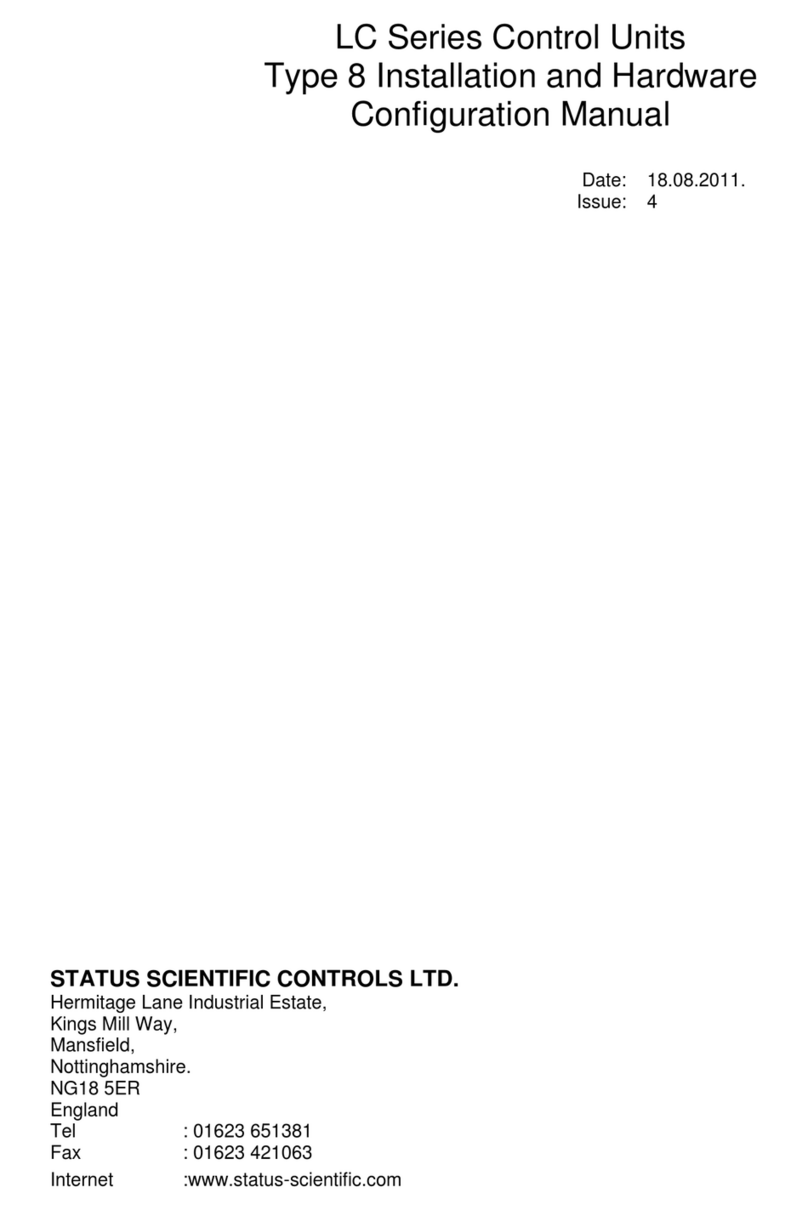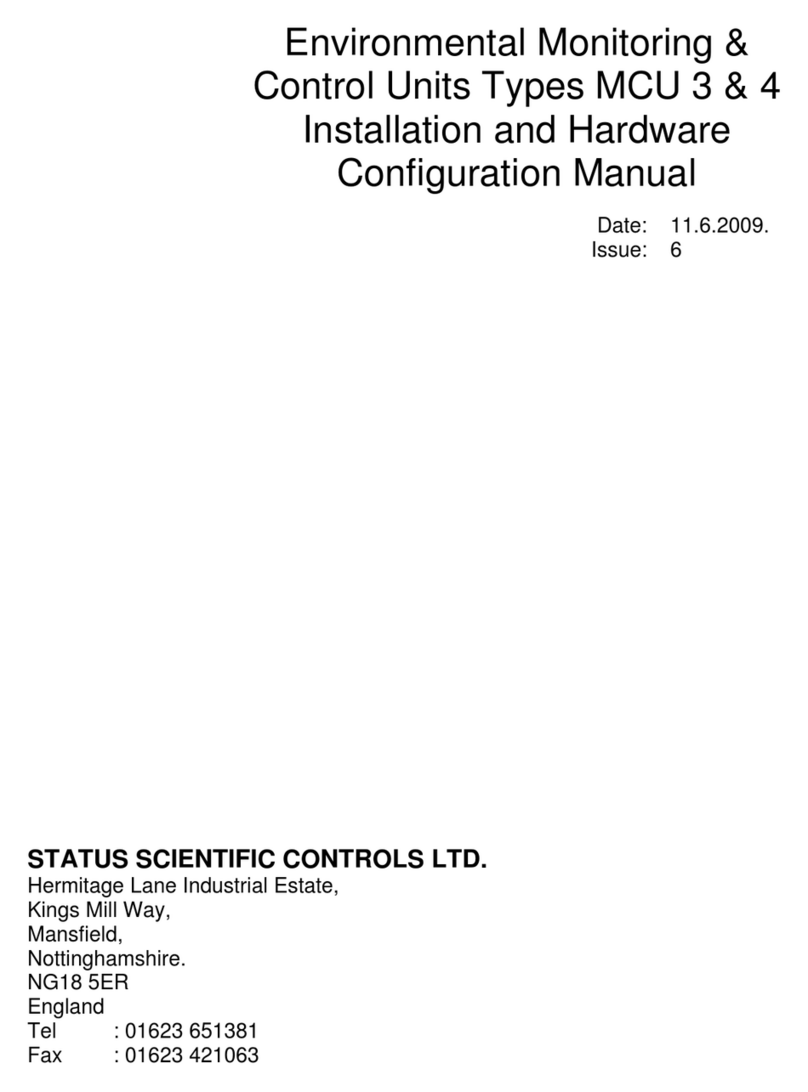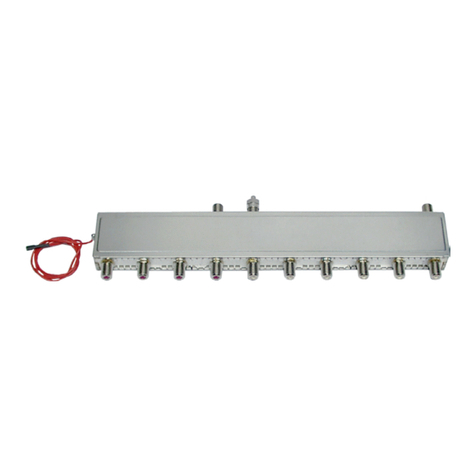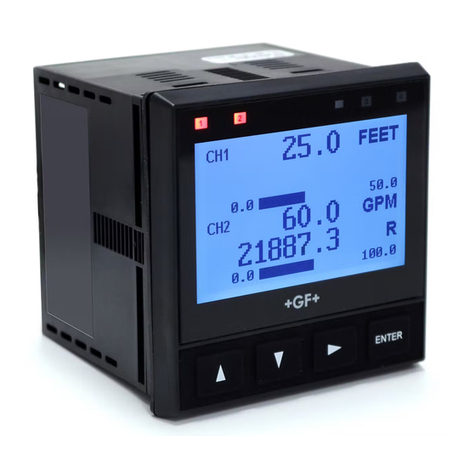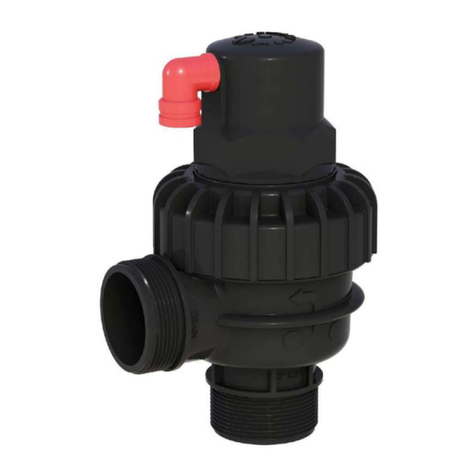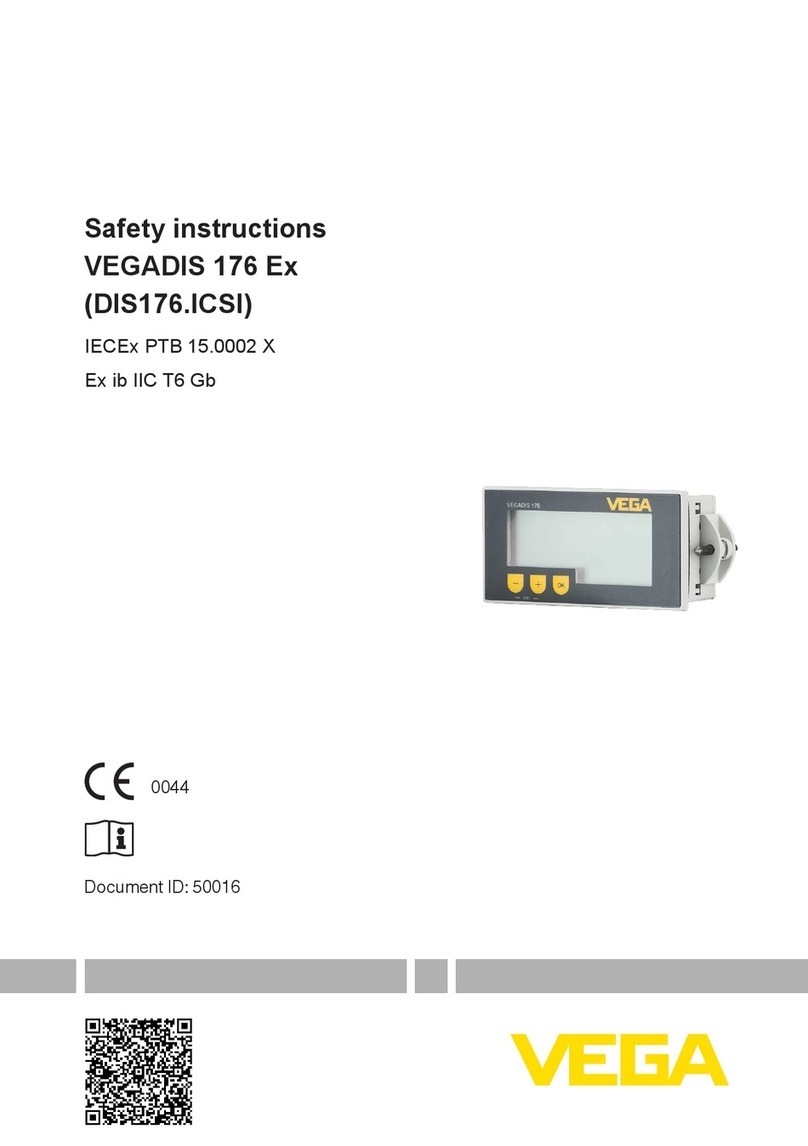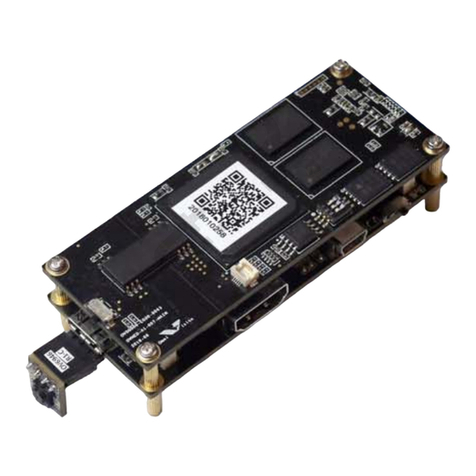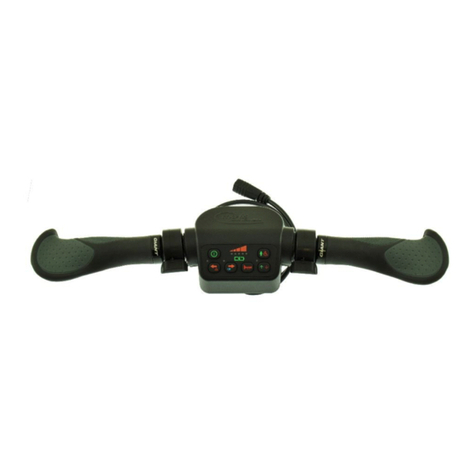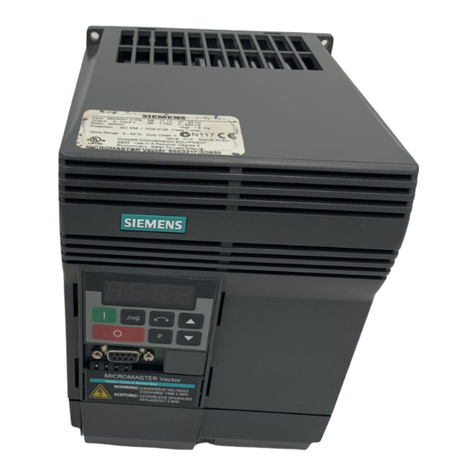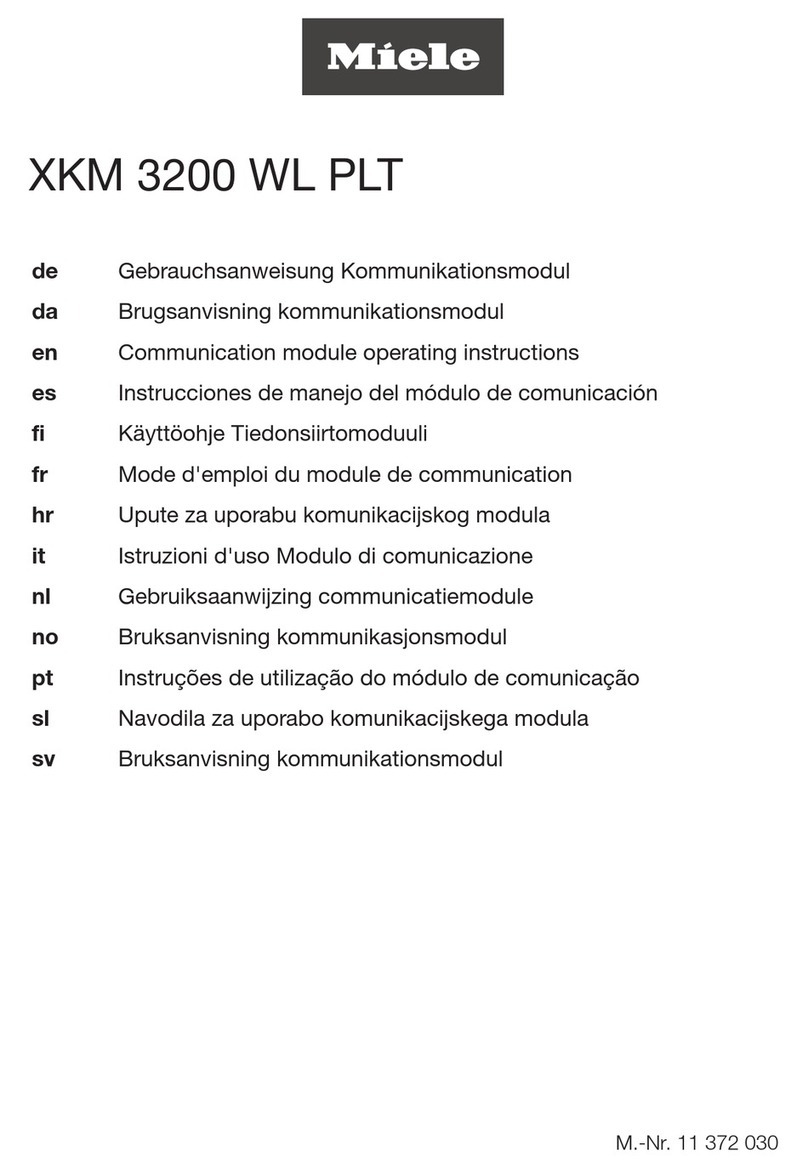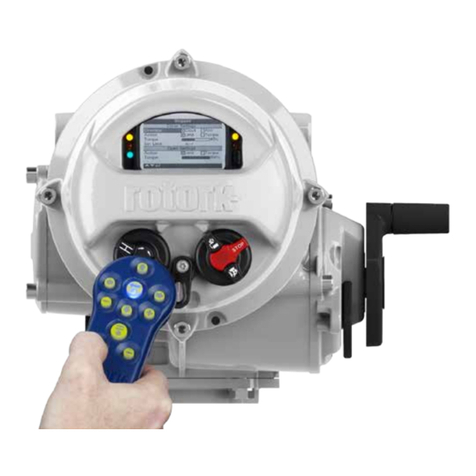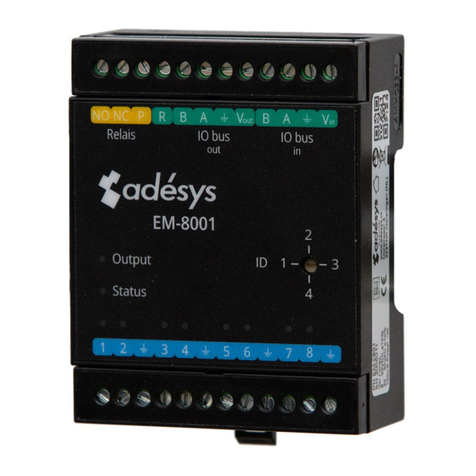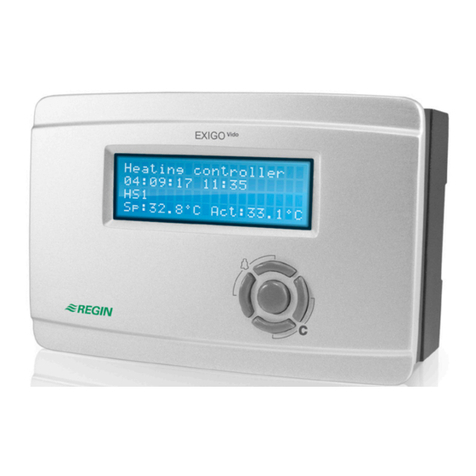STATUS SCIENTIFIC CONTROLS LC Series Instruction sheet

STATUS SCIENTIFIC CONTROLS LTD.
Hermitage Lane Industrial Estate,
Kings Mill Way,
Mansfield,
Nottinghamshire.
NG18 5ER
England
Tel
Fax
: 01623 651381
: 01623 421063
Internet
:www.status-scientific.com
LC Series Control Units
Types 1,2 & 4 Installation and
Hardware Configuration Manual
Date:
18.08.2011.
Issue:
8


STATUS SCIENTIFIC CONTROLS
LC Controller System Installation and Hardware Configuration Manual
The LC Controller Manuals
The LC Series Environmental Monitoring Systems have a range of manuals covering various aspects
of their operation:
•LC Controller Installation and Hardware Configuration Manual
This manual covers all of the hardware aspects of the LC Controller. Each of the component parts of
the system is discussed and hardware configuration is explained. Dimensional drawings are included.
•LC Software Configuration and System Calibration Manual
The operation of the LC Controller is discussed as well as the software configuration and calibration
procedures.
End of Life Disposal
The LC Controller, does not represent a waste hazard but must be disposed of in accordance
with the European Waste Electrical and Electronic Equipment Directive (WEEE) 2002/96/EC.
This means that it should be disposed of responsibly in accordance with an approved
collection and disposal scheme or alternatively returned to Status Scientific Controls Ltd for
recycling or safe disposal.
Important
Status Scientific Controls strive to continually improve their products in line with customer’s
requirements and technological advancement. Status Scientific reserve the right to modify the design
of the system at any time.
Due to continual improvement not all of the features described within this manual may be available on
earlier models, contact Status for further details.

STATUS SCIENTIFIC CONTROLS
LC Controller System Installation and Hardware Configuration Manual
1Introduction................................................................................................................................ 1-1
1.1 MICROCONTROLLER MODULE.................................................................................................1-6
1.2 INPUT CIRCUITRY ..................................................................................................................1-7
FIELD CONNECTIONS..........................................................................................................................1-8
1.3 POWER SUPPLY MODULE ....................................................................................................1-10
2MCU Installation......................................................................................................................... 2-1
2.1 SITING THE MCU...................................................................................................................2-1
2.2 SYSTEM WIRING....................................................................................................................2-2
2.3 POWER SUPPLY INPUT...........................................................................................................2-2
2.3.1 A.C. Mains Connection...................................................................................................2-2
2.3.2 DC Voltage Connection..................................................................................................2-2
2.4 CABLE ROUTING....................................................................................................................2-2
2.5 CABLE SCREENING................................................................................................................2-2
3Gas Detector Head Installation................................................................................................. 3-3
3.1 SITING THE DETECTORS ........................................................................................................3-3
3.2 INSTALLATION IN A NON-HAZARDOUS AREA ............................................................................3-3
3.3 INSTALLATION IN A HAZARDOUS AREAS...................................................................................3-4
3.3.1 Hazardous area installations using Safety Barriers........................................................3-5
4Input Module Configuration...................................................................................................... 4-1
4.1 INPUT CONFIGURATION..........................................................................................................4-2
4.2 STATUS SCIENTIFIC CONTROLS GAS DETECTORS...................................................................4-2
4.2.1 FGD2, FGD3, FGD4 and FGD10b O2and Toxic Detector Heads .................................4-2
4.2.2 FGD3 Infrared Gas Detector Head.................................................................................4-4
4.2.3 FGD3 Pellistor Gas Detector Head.................................................................................4-5
4.2.4 FGD4, FGD9, FGD10a, FGD10b Gas Detector Heads..................................................4-6
4.2.5 Pellistor Only Gas detectors...........................................................................................4-8
4.2.6 FGD56-IR......................................................................................................................4-10
4.3 ANALOGUE OUTPUT CONFIGURATION...................................................................................4-11
4.3.1 4-20mA Current Source................................................................................................4-11
4.3.2 4-20mA Current Sink ....................................................................................................4-12
4.3.3 1-5V Voltage Output .....................................................................................................4-13
5Routine Servicing .................................................................................................................... 5-14
5.1 ROUTINE INSPECTION..........................................................................................................5-14
6Dimension Details...................................................................................................................... 6-1
6.1 LC1 CONTROL UNIT ..............................................................................................................6-1
6.2 LC2 CONTROL UNIT ..............................................................................................................6-2
6.3 LC4 CONTROL UNIT ..............................................................................................................6-3
7Specifications............................................................................................................................. 7-4
7.1 LC1 CONTROL UNIT ..............................................................................................................7-4
7.2 LC2 CONTROL UNIT ..............................................................................................................7-5
7.3 LC4 CONTROL UNIT ..............................................................................................................7-6

STATUS SCIENTIFIC CONTROLS
LC Series Controller Installation and Hardware Configuration Manual
TD18_010
Issue:
8
Change Note:
1759
Page 1-1
1 INTRODUCTION
The LC Series Control Units that provide facilities to monitor a wide variety of industry standard
environmental and other sensors.
The LC1 provides 1 monitoring channel.
The LC2 provides up to 2 monitoring channels.
The LC4 provides up to 4 monitoring channels.
The LC range has been designed primarily for environmental monitoring. However, the versatility of
the range extends its application to other aspects of industry where monitoring of remotely connected
sensors is required. The specification allows the use of any sensor that can produce a voltage or
current output within a specified range.
Care has been taken with the design of the MCU housings and internal chassis to facilitate ease of
connection and wire termination. All on-site wiring to the system is via screw terminal connectors. The
terminal cover has an internal label giving details of the external connections.
A monitoring system consists of, as a minimum, an LC1 Control Unit and 1 detector head. The LC
Control Unit houses all of the components required to implement a sophisticated and reliable
monitoring system (alarm relays etc).
•LC1 Control Unit.
Serial Number
Location

STATUS SCIENTIFIC CONTROLS
LC Series Controller Installation and Hardware Configuration Manual
TD18_010
Issue:
8
Change Note:
1759
Page 1-2
•LC2 Control Unit.
•LC4 Control Unit
Serial Number
Location
Serial Number
Location

STATUS SCIENTIFIC CONTROLS
LC Series Controller Installation and Hardware Configuration Manual
TD18_010
Issue:
8
Change Note:
1759
Page 1-3
The LC Series Control Units are single PCB design. Each Control Unit has a power supply section and
1, 2 or 4 I/O interface sections.
LC1
T R A C O®
P O W E R
FG
AC(N)
AC(L)
Input: 100 –240 VAC
47-63 Hz
0.375 A max
Output: 24VDC / 625 mA
TML 15124
Display PCB Connector
E
L
N
+24V
0V
15 16 17 18
- OUTPUT
+4-20 mA
+ SOUNDER
- SOUNDER
J1
J2
J3
J4
J5
J6
J7
J8
J9
J10
J11
J12
J13
J14
D5 D4
100 - 240
VAC D C
FLT L1 L2
SENSOR
OPTIONS
COM
N.C
N.O
COM
N.C
N.O
COM
N.C
N.O
1 2 3 4 5 6 7 8 9 10 11 12 13 14 19 20 21 22
Note: D5 orientation is be selected for 24Vdc supply as follows:
Input Output
D5
D5

STATUS SCIENTIFIC CONTROLS
LC Series Controller Installation and Hardware Configuration Manual
TD18_010
Issue:
8
Change Note:
1759
Page 1-4
LC2
TRACO®
POWER
FG
AC(N)
AC(L)
Input: 100–240 VAC
47-63Hz
0.375Amax
Output: 24VDC/ 625mA
TML15124
Display PCB Connector
E
L
N
+24V
0V
- OUTPUT
+4-20 mA
100 - 240
VAC D C
FLT L3
SENSOR
OPTIONS
COM
N.C
N.O
COM
N.C
N.O
L1
COM
N.C
N.O
L2
COM
N.C
N.O
1413 15 16
10
11
12
13
14
J1
J2
J3
J4
J5
J6
J7
J8
J9
FS1FS2
SW1
12 3 456 7 8 9 10 11 12 13 14 15 16 17 18 19 20 21 22 23 24
Power supply section I/O interface section Channel 1
Note: connections 12 & 13 may not be fitted on some variants.

STATUS SCIENTIFIC CONTROLS
LC Series Controller Installation and Hardware Configuration Manual
TD18_010
Issue:
8
Change Note:
1759
Page 1-5
LC4
TRACO®
POWER
FG
AC(N)
AC(L)
Input: 100–240VAC
47-63 Hz
0.375 Amax
Output: 24VDC/ 625 mA
TML15124
Display PCB Connector
E
L
N
+24V
0V
- OUTPUT
+ 4-20 mA
100 - 240
VAC D C
FLT L3
SENSOR
OPTIONS
COM
N.C
N.O
1413 15 16
10
11
12
13
14
J1
J2
J3
J4
J5
J6
J7
J8
J9
FS1FS2
SW1
1 2 3 4 5 6 7 8 9 10 11 12 17 18
N.C
N.O
COM
L1
COM
N.C
N.O
18 19 20 21 22 23
L2
COM
N.C
N.O
14 15 1613
The diagrams above show a pictorial representation of the various module positions within the LCU
Series Control Units
The power supply is situated on the LHS of the main PCB with the channel I/Os to the right of the
PCB.
The microcontroller module and LCD display are mounted on the top of the front panel. This connects
to the main PCB via a single flat ribbon cable.
Note: connections 12 & 13 may not be fitted on some variants.

STATUS SCIENTIFIC CONTROLS
LC Series Controller Installation and Hardware Configuration Manual
TD18_010
Issue:
8
Change Note:
1759
Page 1-6
1.1 Microcontroller Module
Situated within the LC Control Unit front panel is the Microcontroller Module. This module
communicates with all Input channels connected to the system PCB.
The Microcontroller Module provides a user interface in the form of a back lit graphics display and a
four button multifunction keypad.
Three LED indications are provided directly by the Microcontroller Module and these are visible via
MCU front panel:
➢Green LED for power.
➢Red LED indication of Alarm level 1.
➢Red LED indication of Alarm level 2
➢Red LED indication of alarm level 3.
➢Yellow LED indication of fault condition.
An Audible signal is also provided by a sounder mounted within Microcontroller module. This provides
a local audible tone during alarm or conditions.
The Microcontroller Module also provides the user with many configuration and interrogation facilities
via the LCD and keypad. These facilities include:
➢Sensor Configuration.
•Allows adjustment of Sensor type and range (e.g. Flammable 100%LEL).
➢Calibration of the system.
•This allows each channel to be calibrated independently. The sensor zero point and span
can both be set via this function.
•Calibration of the retransmitted output for each channel.
•Calibration of the channel power supply.
➢Input Module Relay Configuration.
•Each Input Module contains two relays for alarm levels 1 and 2. The alarm levels can be
individually set to be either rising or falling.
•Fault relay.
•All relays can be configured normally energised or de-energised as required. Latching
and non-latching functions can also be selected.
The microcontroller module contains all of the software required to communicate with up to four
detecting channels. The software is common to all LC Series Control Units.

STATUS SCIENTIFIC CONTROLS
LC Series Controller Installation and Hardware Configuration Manual
TD18_010
Issue:
8
Change Note:
1759
Page 1-7
1.2 Input Circuitry
The input circuit is identical for all channels. Each channel monitors the status of an externally
attached sensor and interfaces the signals that it receives to the microcontroller module.
The input module is designed to accommodate modules that supplies it status signal in any of the
following formats:
(a) 2- wire Current source 4 –20mA.
(b) 3-wire power plus Current source 4 –20mA.
(c) 3-Wire Pellistor Systems.
In addition the input module can re-transmit the signals for use by external equipment (e.g. chart
recorders). The transmitted signal can be configured using jumpers to provide one of three output
options:
•4 –20mA Current Source proportional to the detected signal.
•4 –20mA Current Sink proportional to the detected signal.
•0-5V Voltage Output proportional to the detected signal.
Situated on each Input Module are 1 Pole Change-Over Relays, each relay having contacts rated at
5A (240V AC). These relays operate at Low, and High alarm levels when enabled. Status Scientific
Controls are able to implement modifications to the software to meet a customer’s specific
requirement. Contact Status for further information.

STATUS SCIENTIFIC CONTROLS
LC Series Controller Installation and Hardware Configuration Manual
TD18_010
Issue:
8
Change Note:
1759
Page 1-8
Field Connections
Located on the bottom edge of the main PCB is a number of screw connectors. This is used to provide
connections for inputs, outputs and external buttons:-
LC1
Channel 1
Pins 1, 2 and 3
AC power input.
Pins 4 and 5
24VDC power input.
Pins 6, 7 and 8
Common Fault relay contacts
Pins 9, 10 and 11
Common Alarm level 1 relay contacts
Pins 12, 13 and 14
Common Alarm level 1 relay contacts
Pins 15 to 18
I/O connection to sensors
Pins 19 to 20
4-20 mA output
LC2
Channel 1
Pins 1, 2 and 3
AC power input.
Pins 4 and 5
24VDC power input.
Pins 6, 7 and 8
Common Fault relay contacts
Pins 9, 10 and 11
Common Alarm level 3 relay contacts
Pins 13 to 16
I/O connection to sensors
Pins 17 to 18
4-20 mA output
Pins 19, 20 and 21
Alarm level 1 relay contacts
Pins 22, 23 and 24
Alarm level 2 relay contacts
Channel 2
Pins 25 to 36 are the same functions as 13 to 24.

STATUS SCIENTIFIC CONTROLS
LC Series Controller Installation and Hardware Configuration Manual
TD18_010
Issue:
8
Change Note:
1759
Page 1-9
LC4
Channel 1
Connections and are the same as 13 to 24.
Channel 2
Pins 25 to 36 are the same functions as 13 to 24.
Channel 3
Pins 37 to 48 are the same functions as 13 to 24.
Channel 4
Pins 49 to 60 are the same functions as 13 to 24.
An Earth point is also provided on the main PCB.

STATUS SCIENTIFIC CONTROLS
LC Series Controller Installation and Hardware Configuration Manual
TD18_010
Issue:
8
Change Note:
1759
Page 1-10
1.3 Power Supply Module
The Power Supply is situated on the LHS of the main PCB within the enclosure and provides the
power for the whole system. The power supply is a standard item and does not require any
modifications regardless of the type and quantity of detector heads being used.
TRACO®
POWER
FG
AC(N)
AC(L)
Input: 100 –240 VAC
47-63 Hz
0.375 A max
Output: 24VDC / 625 mA
TML 15124
Fault relay
Fuse 1
Fuse 2
1 2 3 4 5 6 7 8 9 10 11 12
Common L3 Alarm
Relay
Power Switch
There are two power source options available to the system:
1. 100-240V AC Mains Supply, connectors 1, 2 and 3
2. 18 to 28V DC Supply, connectors 4 and 5
There are two fuses situated on the main PCB. These are:
FS1 (T1.0A) AC supply Fuse
FS2 (T500mA) DC Supply Fuse

STATUS SCIENTIFIC CONTROLS
LC Series Controller Installation and Hardware Configuration Manual
TD18_010
Issue:
8
Change Note:
1759
Page 2-1
2 MCU INSTALLATION
The MCU Control Units and FGD Gas Detectors are fully tested prior to delivery. However, after
installation we strongly recommend that full system testing and commissioning be carried out. Status
Scientific Controls Service personnel are best equipped to perform the relevant tests and
commissioning and will be able to offer advice regarding installation faults.
WARNING Installation should be made in accordance with either British Standard BS
EN60079-14 (which supersedes BS5345) “Electrical Apparatus for Explosive Gas
Atmospheres”, or in accordance with the relevant National or Local regulations.
CAUTION
The MCU Control Units and associated modules contain no user serviceable parts. Refer all servicing
to qualified service personnel.
2.1 Siting the MCU
THE LC SERIES CONTROL UNITS MUST BE SITED IN A NON-HAZARDOUS LOCATION WHERE
THERE IS NO RISK OF THE PRESENCE OF POTENTIALLY EXPLOSIVE GAS.
Either a 100-240VAC 50 Hz supply or a 24V DC supply can be used to power the control unit.
The site of installation should be chosen with regard to the following:
•This equipment should not be located near to known sources of heat.
•Operating personnel should be within convenient reach of the equipment and within audible
distance of alarms.
•Maximum loop lengths of cable runs and cable inductance to resistance ratios must not
exceed limits shown in the relevant loop diagrams (refer to section 3.2).
•Avoid mounting this equipment near potential sources of electrical interference e.g. motors,
switch gear, radio transmitters etc.
Mounting details for the LC Controller enclosures are located within the Appendix (section 6).

STATUS SCIENTIFIC CONTROLS
LC Series Controller Installation and Hardware Configuration Manual
TD18_010
Issue:
8
Change Note:
1759
Page 2-2
2.2 System Wiring
All connections should be made according to the appropriate sensor or loop diagram for the
configuration required. It is advised that ‘Bootlace Ferrules’ or ‘flat blade crimps’ be used for tidy and
reliable connections of wires into the Control Unit and Detector Head connectors.
2.3 Power Supply Input
An isolating switch should be provided between the power source and the MCU control units to allow
the supply to be easily disconnected. This should incorporate over current protection or a circuit
breaker. Alternatively a fused supply would suffice.
2.3.1 A.C. Mains Connection
The power supply board has three screw terminals connector assigned for the connection of an AC
supply.
Pin 1 = Earth
Pin 2 = Live input
Pin 3 = Neutral input
Recommendation for mains input cable:
3-Core - Conductors having cross sectional area of 0.75mm2minimum (24/0.2).
2.3.2 DC Voltage Connection
The power supply board has two screw terminals assigned for the connection of a DC supply.
Pin 4 = +24V DC input
Pin 5 = 0V DC input
2.4 Cable Routing
Due to the low signal levels generated by gas detectors it is recommended that all wiring to the
sensors by segregated away from AC mains or other high voltage/power lines to avoid interference.
2.5 Cable Screening
The use of a screened cable is recommended for the installation of all detector heads. The screening
is used to minimise the effects of electrical interference generated by external equipment e.g. motors,
switchgear etc. The correct strategy for connecting the screens depends upon the area in which the
detector head is to be used (i.e. hazardous/ non-hazardous). In all cases the screen should not be
connected at the detector head.

STATUS SCIENTIFIC CONTROLS
LC Series Controller Installation and Hardware Configuration Manual
TD18_010
Issue:
8
Change Note:
1759
Page 3-3
3 GAS DETECTOR HEAD INSTALLATION
3.1 Siting the Detectors
Mounting positions for the gas detectors need to be considered individually, Status Scientific Controls
will offer advice and assistance with regard to the siting of detectors in varying environments. Some
initial points for consideration are:
•Ensure all gas detectors are mounted to allow routine calibration and maintenance to be
carried out as required.
Note: Sensors can operate reliably for several years however the environment may
reduce the sensor expected life.
•Ensure the proposed site will not interfere with movement of existing equipment, e.g.
cranes, doors etc
•Install all cables neatly and securely.
•Detectors for gases that are lighter than air should be positioned at a high level.
•Detectors for gases that are heavier than air should be located at below head height.
•Avoid siting the gas detectors adjacent to potential sources of radio frequency interference,
e.g. radio transmitters, control switchgear, motors etc.
•Ensure the detectors are mounted with sufficient space to allow air movement around the
sensor section, and the opening of the front hinged lid.
3.2 Installation in a Non-Hazardous Area
Where gas detector heads are to be installed in an area where there is no potential of an explosive
gas hazard present, the cable lengths are limited solely by the resistance of the cable. The FGD2,
FGD3 or FGD10b gas detectors fitted with either oxygen or toxic sensors require a minimum of 6V at
its terminals to operate correctly. The maximum cable loop resistance is therefore
(20-6)/25mA i.e. 560.
Cable resistance values depend upon the size of the cable. Typical resistance values are:
1.0mm2solid core 40/Km loop.
1.5mm2solid core 25/Km loop.
The correct wiring method for all Status Scientific FGD2 / FGD3 Detector Heads (in a non-hazardous
location) is shown below. It is important to note that this drawing shows the wiring connections but
does not discuss the Input Module configuration. Prior to connecting the Detector Head ensure the
Input Module is correctly configured (refer to section 4.1).
Note:
The screens from each cable are connected to the chassis earth of the control unit. The connection
between the system 0V and the earth of the chassis is made by fitting Jumper J1 located on the
distribution board.
For installation diagrams for FGD Flammable Gas Detector Heads refer to section 3.3.

STATUS SCIENTIFIC CONTROLS
LC Series Controller Installation and Hardware Configuration Manual
TD18_010
Issue:
8
Change Note:
1759
Page 3-4
3.3 Installation in a Hazardous Areas
Where gas detector heads are to be mounted within a potentially explosive atmosphere then electrical
safety barriers must be fitted in order to limit the electrical energy that is supplied into the hazardous
area. This prevents an incendive spark occurring under an electrical fault condition.
When using barriers to create an I.S. supply, certain restrictions are imposed on the parameters of the
interconnecting cables used. These parameters are defined by the manufacturer of the barrier and
limit the maximum capacitance, inductance and inductance to resistance ratio of the cable. The
installation is only intrinsically safe when the combination of the barrier and connecting cables comply
with the manufacturer’s specification.
As with a non-I.S. installation, the cable length is restricted by the cable loop resistance. With the
introduction of a barrier, the cable loop resistance is reduced because of the internal resistance of the
barrier. The end to end resistance of the barrier must therefore be subtracted from the overall cable
loop resistance when calculating cable lengths.
Barriers must be selected to restrict the parameters of the I.S. supply to the gas detectors within the
following limits:
Gas Detector
Terminals
Umax
Imax
Pin
FGD2/3 Oxygen or Toxic
0V and SIG
30V
0.15A
0.81W
FGD2/3 Flammable
0V and SIG
30V
0.15A
0.81W
0V and PWR+
7.5V
0.75A
1.4W
When considering the capacitance and inductance allowable across the barrier output terminals, note:
There is zero capacitance and zero inductance between terminals 0V and SIG on any model of FGD
Detector head.
There is an equivalent of 1.4F capacitance and zero inductance between terminals 0V and PWR on
the FGD2 and FGD3 flammable gas detectors.

STATUS SCIENTIFIC CONTROLS
LC Series Controller Installation and Hardware Configuration Manual
TD18_010
Issue:
8
Change Note:
1759
Page 3-5
3.3.1 Hazardous area installations using Safety Barriers.
The following diagrams show how proprietary I.S. barriers can be used (barriers manufactured by MTL
are shown).
4 2
MTL728+
3 1
I.S.
Earth
Screen
Screen
Hazardous area Safe Area
Connection diagram for FGD2 & 3 Flammable
Detectors in aHazardous
area
4 2
MTL758
3 1
Sig 0 +
Alarm
level 1
J1
J2
J3
J4
J5
J6
J7
J8
J9
Alarm
level 2
+ -
4-20mA Loop
4 2
MTL728+
3 1
I.S.
Earth
Screen
Screen
Hazardous area Safe Area
Alarm
level 1
J1
J2
J3
J4
J5
J6
J7
J8
J9
Alarm
level 2
Note:
The system 0V is NOT connected to the earth.

STATUS SCIENTIFIC CONTROLS
LC Series Controller Installation and Hardware Configuration Manual
TD18_010
Issue:
8
Change Note:
1759
Page 3-6
The I.S Earth connection on the power distribution PCB must be connected to the installations’ I.S.
earth point. The connection must be made via a conductor of minimum 4mm2cross sectional area.
Refer to EN60079-14 (previously BS5345:Part 4, section 16) for further details of earthing
requirements.
Other manuals for LC Series
1
This manual suits for next models
3
Table of contents
Other STATUS SCIENTIFIC CONTROLS Control Unit manuals
